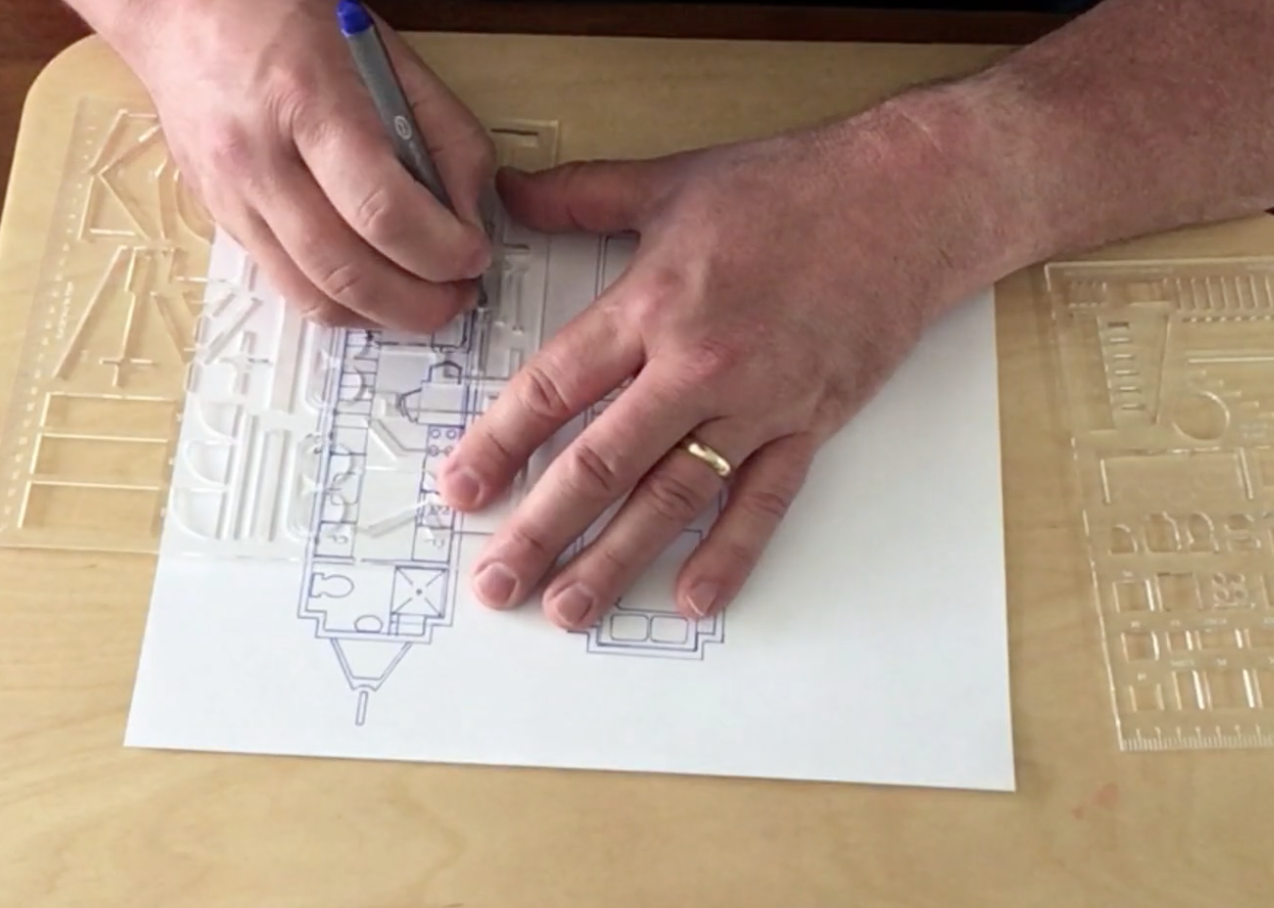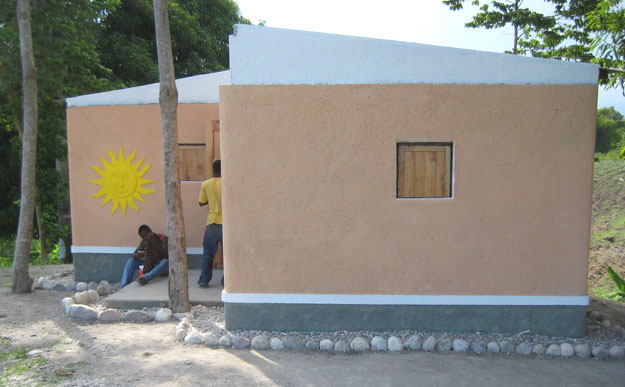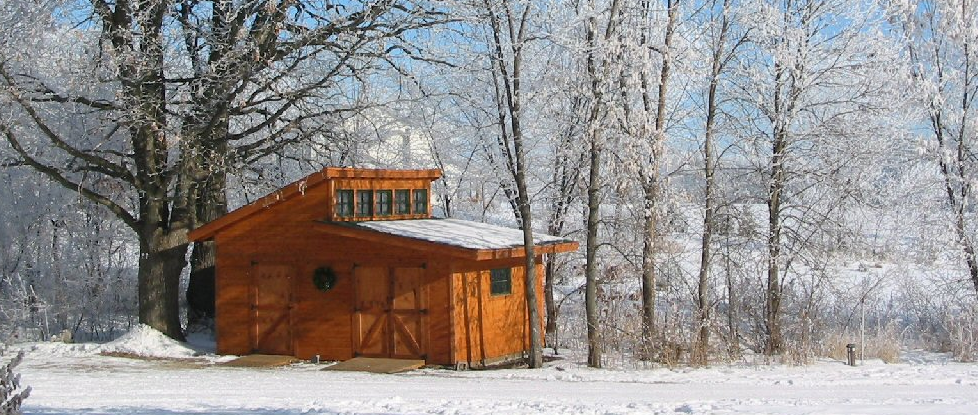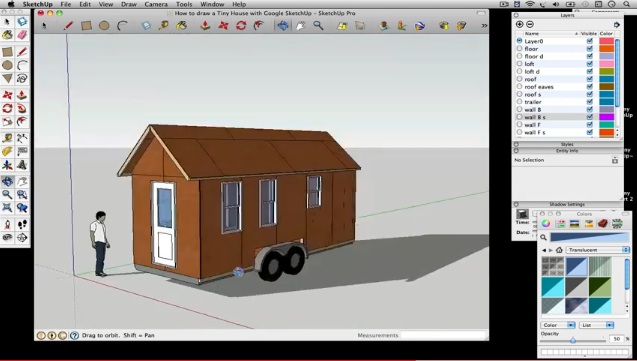How Much Does It Cost To Rent A Scissor Lift?
How Does A Scissor Lift Work?
A scissor lift is a machine that is a platform on wheels, which can be lifted up or down mechanically. It’s used in various industries to reach higher places safely and to work on things that are located higher up. A scissor lift can be used in place of scaffolding, for example.
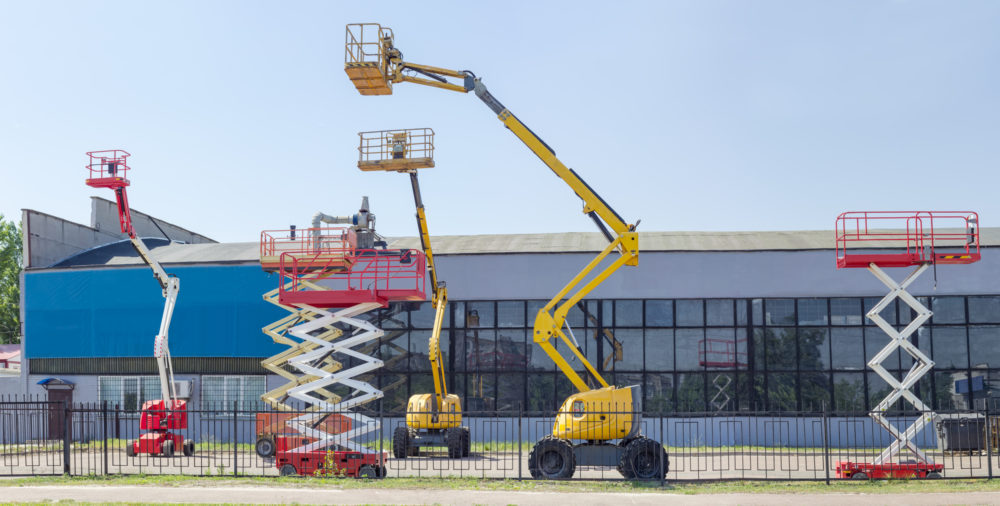
Contents
The most common applications are in construction and facility maintenance, for example for installing windows, hanging signs, or for painting areas that are high up and where it’s impractical to use a ladder.
To use a scissor lift safely, you should avoid using it on uneven surfaces (incl. hills and grassy areas) to prevent tipping injuries. Smaller scissor lifts are great for indoor use since they fit through the door, but one should lift them slowly and carefully toward the ceiling.
Types of Scissor Lifts
There are five different types of scissor lifts:
- Hydraulic scissor lift
- Diesel scissor lift
- Electrical scissor lift
- Rough terrain scissor lift
- Pneumatic scissor lift.
The hydraulic scissor lift is powered by either an electric motor or compressed air and is best for warehouse use, construction or infrastructure projects. It looks like this:
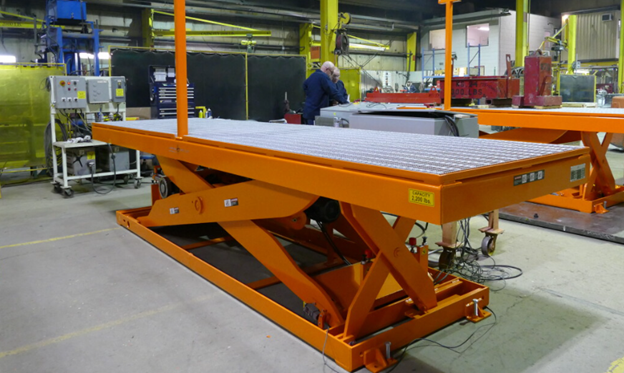
The diesel scissor lift is powered by traditional diesel engines and is best for outdoor construction projects or well-ventilated areas due to the diesel exhaust fumes. It has a larger platform than the hydraulic scissor lift and is therefore a great fit for bulkier items or projects that require more work space in air. It looks like this:
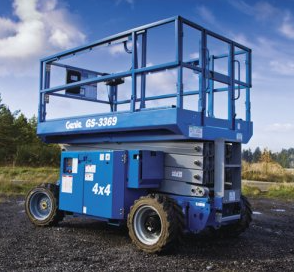
The electrical scissor lift is powered by electric batteries and does not emit any fumes. It also operates quietly, making it a great fit for indoor use. It is smaller than its diesel counterpart, with a smaller platform and non-marking tires to avoid damage to flooring. It looks like this:
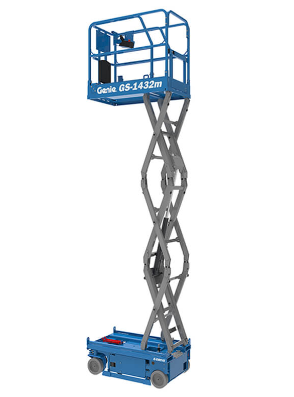
The rough terrain scissor lift is best for rugged outdoor surfaces (as the name implies), is typically powered via combustion diesel, petrol or LPG engines to provide the necessary power for operating across rough terrain and lifting heavier payloads. This type of scissor lift has a great level of traction and travel speed. It looks like this:
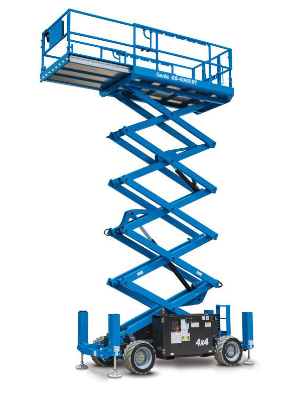
The pneumatic scissor lift is air-powered and very precise and quiet. It is also very environmentally-friendly and best for stationary indoor applications, such as lift tables. It looks like this:
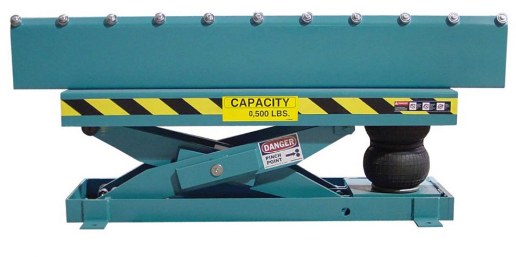
Each scissor lift has its advantages and disadvantages and its matching unique applications. However, the hydraulic scissor lift is the most versatile and most commonly used scissor lift.
Benefits Of Using Scissor Lifts
There are several different benefits of using scissor lifts:
- Ease of access to higher areas and hard-to-reach places
- Ease of use
- Compact size
- Minimum floor space
- Easily customizable
Source: www.pflow.com
How Much Does It Cost To Rent A Scissor Lift?
You can rent a scissor lift at major home improvement chain stores like Home Depot or at specific machinery rental places, such as Sunbelt Rentals or United Rentals.
To locate the nearest scissor lift rental, search online (e.g. Google) or use Websites like www.unitedrentals.com, www.catrentalstore.com or www.sunbeltrentals.com to find the closest rental location near you.
The daily rental rate for a scissor lift is anywhere between $80-$200 on average, with a weekly average rate of $300-350.
What Sizes Do Scissor Lifts Come In?
The two different variables in scissor lifts when it comes to size are the size of the platform, as well as the max height of the lift.
The platform sizes range from 26×64 inches to 42×86 inches.
The scissor lift heights range from anywhere from 19 ft to 50+ ft.
The platform size and choice of scissor lift also determines the max load capacity, which can range from 500-1,000 lbs.
The scissor lifts can weigh anywhere from 2,575 lbs to 7,480 lbs.
How To Rent A Scissor Lift
You can rent a scissor lift with a down deposit (or credit card on file for damage deductible). The operator has to be trained and certified prior to use of the scissor lift.
To rent a scissor lift, make sure you understand the scope of your project and the lift use and application in that scenario to avoid costly rentals. Many equipment rental companies have a brief questionnaire or send out a person to take a look at your site and project to make sure your lift selection is appropriate.
You reserve the equipment, put a security deposit down and schedule delivery of the equipment. Many rental companies also offer user training and technical support as part of their rental package.
A scissor lift is either delivered to you, or you can use a flatbed truck to deliver the lift to your work site.
Safety Tips When Operating A Scissor Lift
You need to be trained and licensed prior to operating a scissor lift, per OSHA standards and regulations. The equipment usually has two separate emergency stop buttons that one has to disengage in order to operate the equipment. This prevents accidental start or movement of the machine.
OHSA does not require the use of a safety harness in most applications when using the scissor lift; however, this is assuming that the individual is operating the equipment in a safe and trained manner.
The biggest risk with a scissor lift is tipping over when on uneven surfaces, extended too high and when the individual is shifting the center of balance by overextending outside the lift platform area.
Should You Rent Or Buy A Scissor Lift?
Below are the prices for different scissor lifts:
- 19-ft. Scissor Lift: $10,000 to $15,000
- 26-ft. Scissor Lift: $15,000 to $25,000
- 32-ft. Scissor Lift: $25,000 to $40,000
- 45-ft. Scissor Lift: $40,000 to $55,000
- 50-ft. Scissor Lift: $55,000 to $70,000
Source: www.aerialliftcertification.com
A company that uses a scissor lift daily should probably just purchase one, since the weekly rental rates are about $300. Even if used for 260 days in a year, that would be $78,000!
However, 95% of scissor lift rentals are rented out for one week or less, so one should really consider this capital investment, such as a scissor lift, as it includes storage, taxes, upkeep, maintenance, depreciation and other ancillary costs of owning equipment.
Before renting a scissor lift, make sure your operator is trained and certified. Make sure you can transport the scissor lift to the location (or have it delivered). Consider the application before choosing the proper scissor lift. Make sure the height, weight and platform size are matching your needs. Finally, if you are planning on using the scissor lift indoors, make sure you can fit it through the door into the area of use.
FAQs
Who are the best scissor lift manufacturers?
The top scissor lift manufacturers are Skyjack, Genie, and JLG.
What is the difference between a scissor lift and a boom lift?
Boom lifts move horizontally and vertically, whereas scissor lifts can only move up and down. Boom lifts can attain a greater vertical reach, but scissor lifts have larger platforms with higher weight capacities, which means they can carry multiple people along with loads of material.
Is a boom lift safer than a scissor lift?
The platform on a boom lift is smaller, which might make it riskier for people who try to hoist a bulky item. Also, the boom lift can maneuver horizontally, as well as vertically (meaning that there is a greater risk for user error). Because of that, a boom lift is probably less safe than a scissor lift.
Do you need a license before renting a scissor lift?
Per OSHA guidelines, you do need a license (and proper training) prior to operating a scissor lift.
Do scissor lifts tip over?
Yes, if they are not properly secured or operated, they can tip over. In fact, that is one of their greatest hazards.
Will a scissor lift fit through a door?
The smaller scissor lifts are designed to fit through the door.
How high can a scissor lift go?
A scissor lift goes anywhere from 20-60 feet high.
Are scissor lifts drivable?
Yes, although you drive them with a joystick and you should move them for short distances to work sites only.

